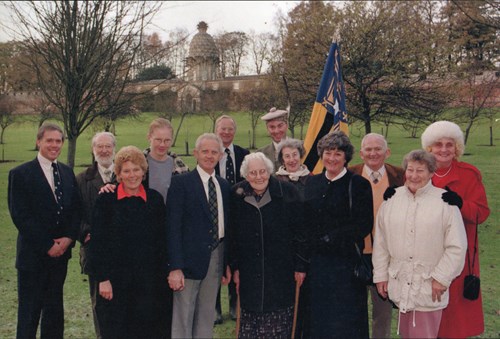
EARL PLANTS TREE TO MARK HIS ROOTS
The Murray Clan Society
Added on 17 November 1998
The Australian holder of one of Scotland's oldest aristocratic titles arrived in Stirlingshire yesterday [16th November 1998] to renew his links with the past. The 12th Earl of Dunmore became the first Earl to return to Scottish soil since the title was taken away to Tasmania by his Scots uncle after the death of the 9th Earl in 1942. To mark the return, the current Earl, Lord Malcolm Murray, who lives in Devonport, Tasmania, planted a tree in memory of his forefathers at the Pineapple in Airth, the family's ancestral home. Lord Murray, 52, said:
''This is our first overseas trip. I am just overwhelmed by seeing the whole estate here. We've seen pictures and postcards of the old family home but nothing can portray it for what it really is. The size of the building is immense and the gardens are absolutely beautiful. We are very proud of our Scottish heritage in Tasmania and we wear kilts whenever we can''.
The first Earl of Dunmore, Lord Murray of Blair, bought the 315-acre property in Airth in the seventeenth century. In 1761 the fourth Earl, John Murray, built the unusual pineapple-shaped tower as a focal point to the garden. The 9th Scottish Earl of Dunmore, also called John Murray, died in Edinburgh in 1942 and the estate was broken up at the end of the Second World War. The position was passed on to the current Earl's Scottish uncle, who took the title to Tasmania. He only held it for a few months before it was inherited by his younger brother, Kenneth Randolph-Murray, who became the first Tasmanian Earl. Lord Malcolm Murray, an electrical technical officer with the Air Services Australia, then inherited the title from his father in 1995. He will take up his seat in the House of Lords for the first time when Parliament resumes next Tuesday. The Pineapple and 16 acres of land were gifted to the National Trust for Scotland in 1973. The Landmark Trust restored the building and the grounds, and it is currently let out during holiday periods. Source: The Herald - 17th November 1998.